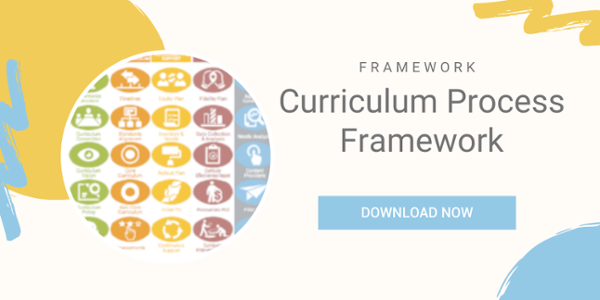
want to build a successful curriculum blueprint? here's our recipe
school districts | curriculum strategy & adoption
sometimes i wish i were more like my mom. there are many reasons why, but many times it’s because i wish i were a great cook. i used to watch her in the kitchen just glance at a picture of a dish from a cookbook, then create that without ever having to follow the step-by-step recipe that was next to the picture. it was like watching a magic show.
at first, i thought she was just gifted in cooking. then i realized that she has been cooking since she was in her teens; and although she may be gifted, it was the years of practice that made her an expert. well, i don’t claim, nor do the people around me, that i am a great cook. i do, however, make dishes from time to time. sometimes they fail, sometimes they turn out decent. what i find is that because i am not an expert in cooking, following a set recipe with every ingredient measured out gives me a significantly higher chance at creating a successful dish than when i “go rogue”.
i think this analogy is totally relevant when it comes to planning a successful curriculum implementation for your school district. with our in-house experts, we’ve created a recipe that will help you develop a curriculum process aligned with the district’s vision, and whose implementation can be done with fidelity. the good news is that we are happy to share that recipe with you!
phase 0: plan & align
before you begin, plan and align on project goals, team, and schedule.
- project goals
- how will your curriculum help you accomplish your district vision?
- will you be visioning in parallel to existing district initiatives? or will the district vision be guided by the goals of the curriculum?
- project team
- think of it as an initiative startup team followed by a team that comprises your curriculum department.
- you want a district level team for this work that includes representatives from multiple stakeholder groups for visioning and planning, but this needs to transition into a functional working group to handle the continuous needs of an effective curriculum program.
- project schedule
- just as with the project team duality, there needs to be a timeline for completing the visioning and planning, which will then roll into a continuous workflow for the curriculum team that will execute the plan that is put in place for curriculum revisions and adoption.
- 4 phases of work
- plan and align your project calendar, ensuring the duration of the project meets the needs of the implementation target date and working backwards to plan out key dates in the following four phases:
- phase 1: foundations
- phase 2: design i – curriculum blueprint design
- phase 3: design ii – cyclic resources adoption
- phase 4: implementation support
note that phases 1 through 4, described in more detail below, can be revisited based on your initial plan.
critical questions to ask when building a life-changing curriculum process
phase 1: foundations
this phase consists of performing readiness assessments and building a strong foundation around vision, strategy and required knowledge before designing a future-state curriculum blueprint.
- readiness assessments
- interviews with school and district leaders
- review of documents and policies related to the current curriculum
- observations of classroom practices
- foundations workshops
- curriculum vision alignment
- curriculum definition and common language
- future state curriculum simulation
- current vs future state curriculum comparison
- discovery of priority areas
phase 2: design i - curriculum blueprint design
the first part of the design phase focuses on designing a future curriculum strategy and developing a curriculum blueprint based on the priority areas defined in the foundations phase. common commitment for implementation is made during this phase.
phase 3: design ii - cyclic resource adoption
the second part of the design phase is about aligning the cyclic resource adoption process with the new curriculum blueprint that has been developed. a key part of this phase will involve a needs analysis with the curriculum adoption committee.
phase 4: implementation support
the district is now ready to launch the new curriculum process. we offer ongoing implementation support for those districts who would like professional support and assistance post-launch. the support includes:
- review and revision of the deliverables from phases 2 and 3
- observations of implementation
- current state check-up and progress report post implementation
just as with any recipe, there is no “secret ingredient,” but rather the strategic mixing of common ingredients to ensure a successful result. but we do know that there are key points, sequences, and strategies that must be followed for success. this is no different than looking at implementing a successful curriculum process. we feel fortunate to be able to support the innovative districts looking to design their own unique future-ready curriculum process and are excited to be their partner, supporter, and facilitator as they move forward. just ask us how.




